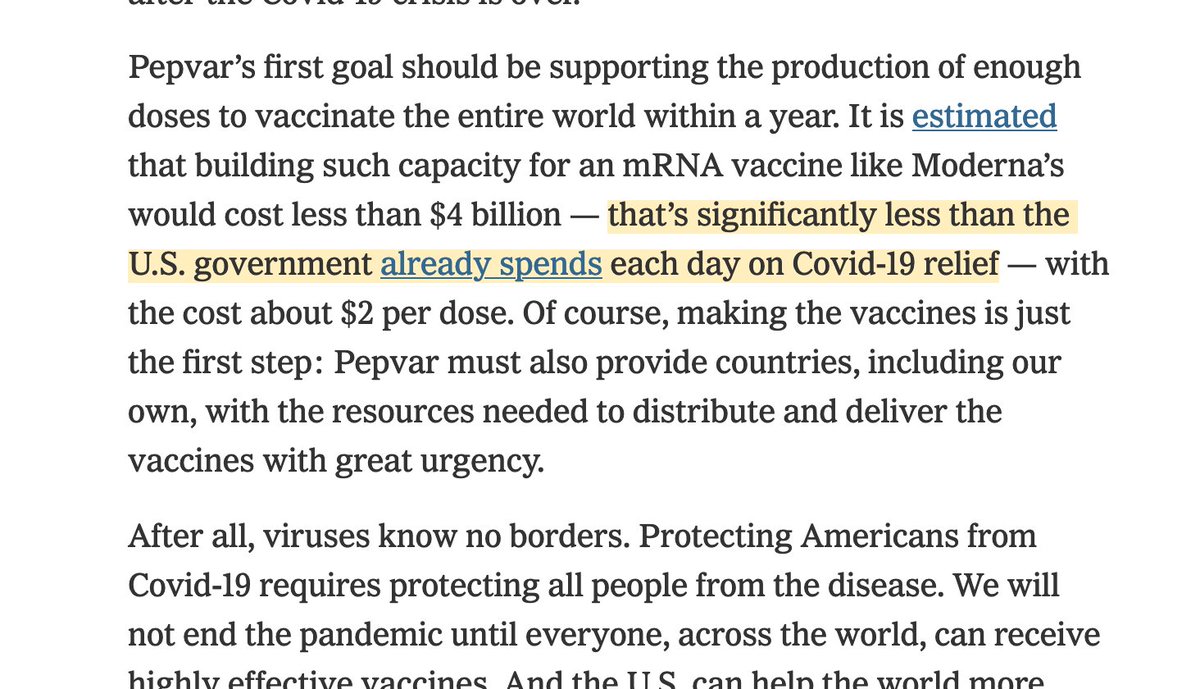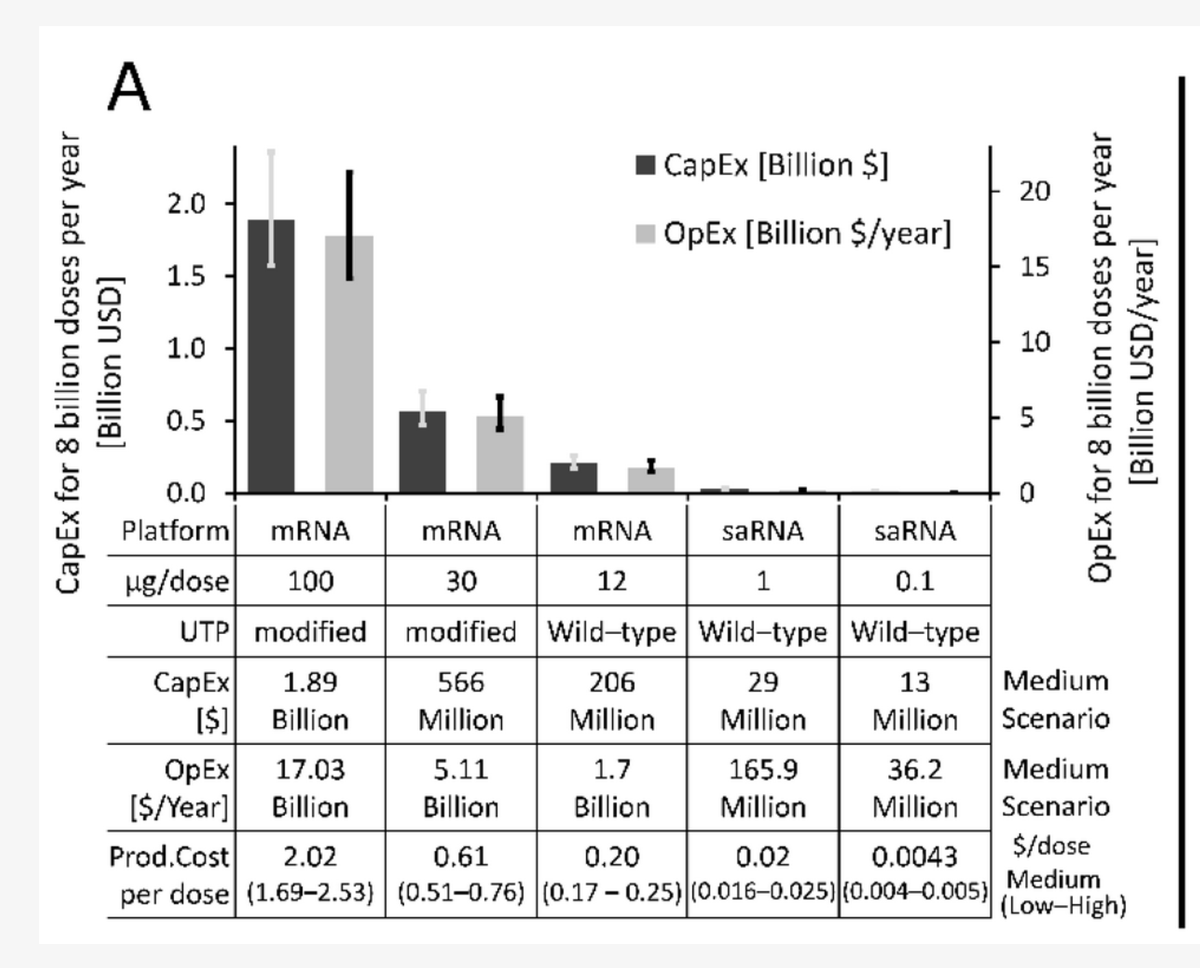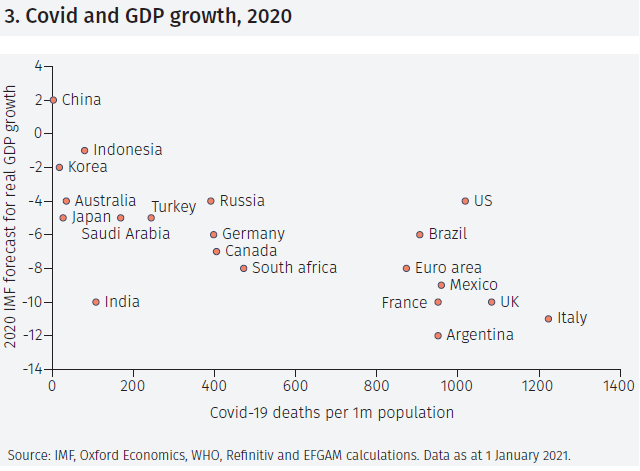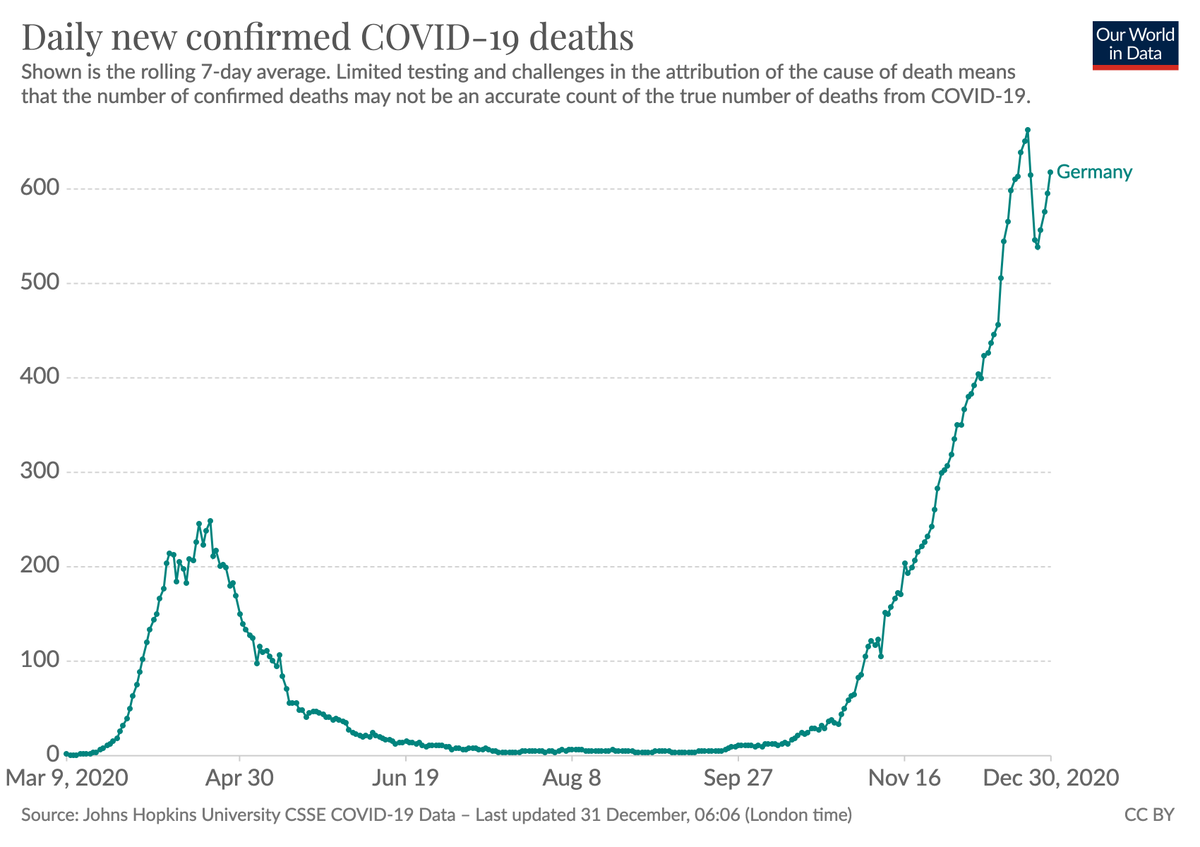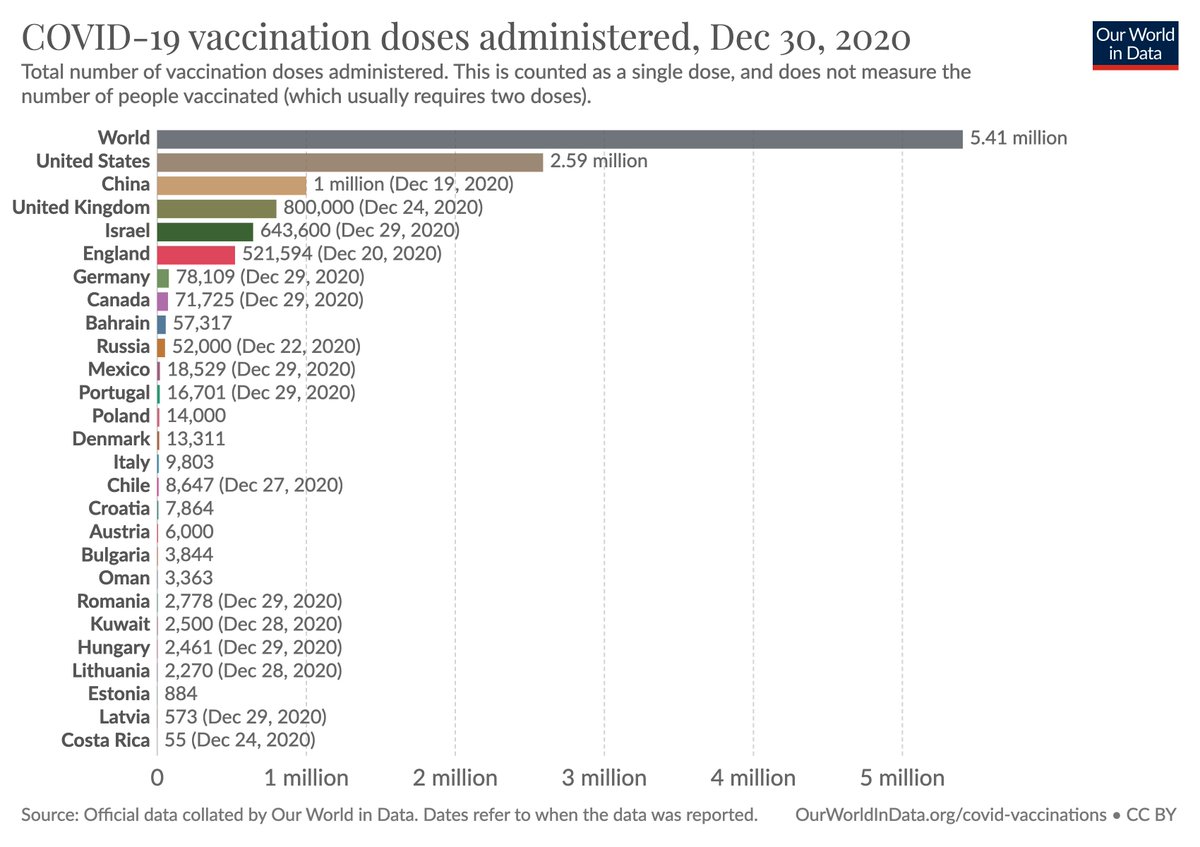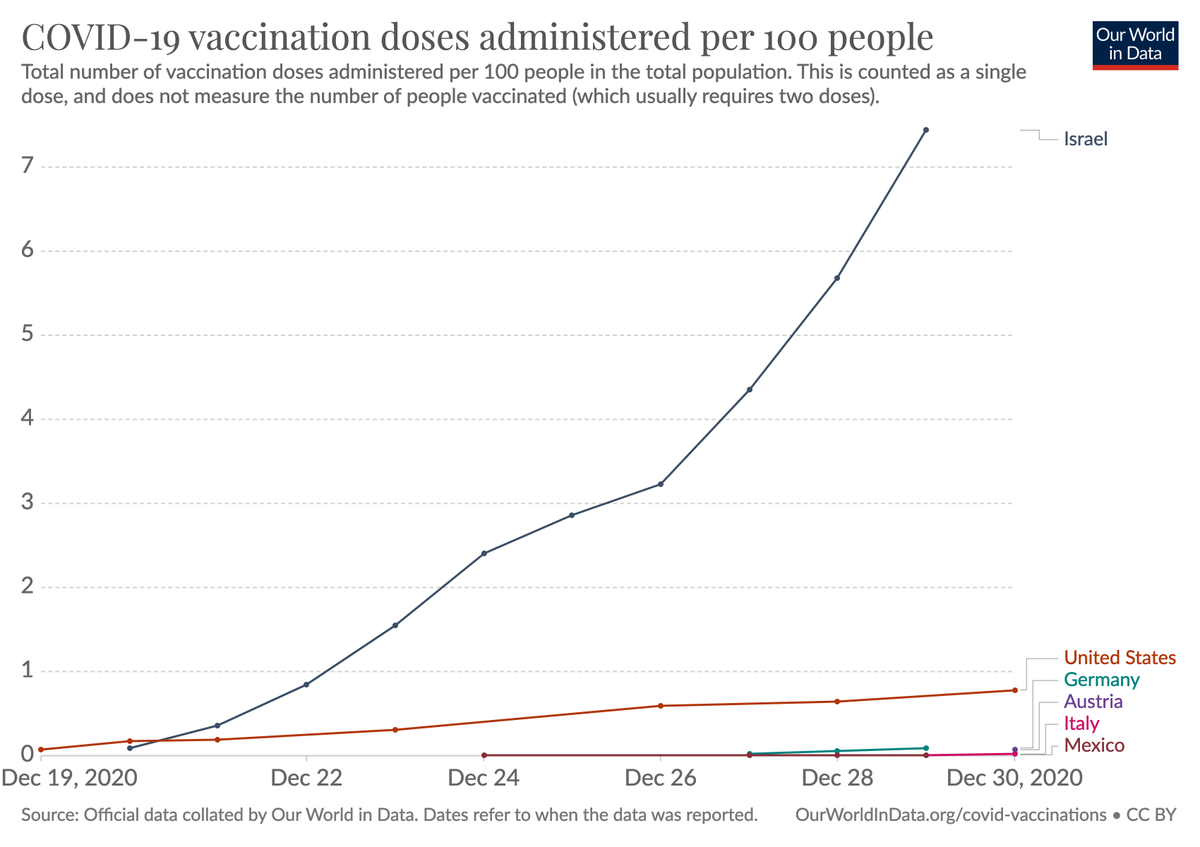
1/ If we had more vaccines we could bring an end to the deaths and lockdowns.
We could have produced these vaccines last year if governments had taken the risk to pay for their production, before they were approved.
It was a huge mistake to not do this.
We should not repeat it.
We could have produced these vaccines last year if governments had taken the risk to pay for their production, before they were approved.
It was a huge mistake to not do this.
We should not repeat it.
2/ There are 239 COVID vaccines under development.
It will take time until we know which ones will actually work and it will often take many months until they are possibly approved.
But we could risk now to produce these vaccines already.
It will take time until we know which ones will actually work and it will often take many months until they are possibly approved.
But we could risk now to produce these vaccines already.
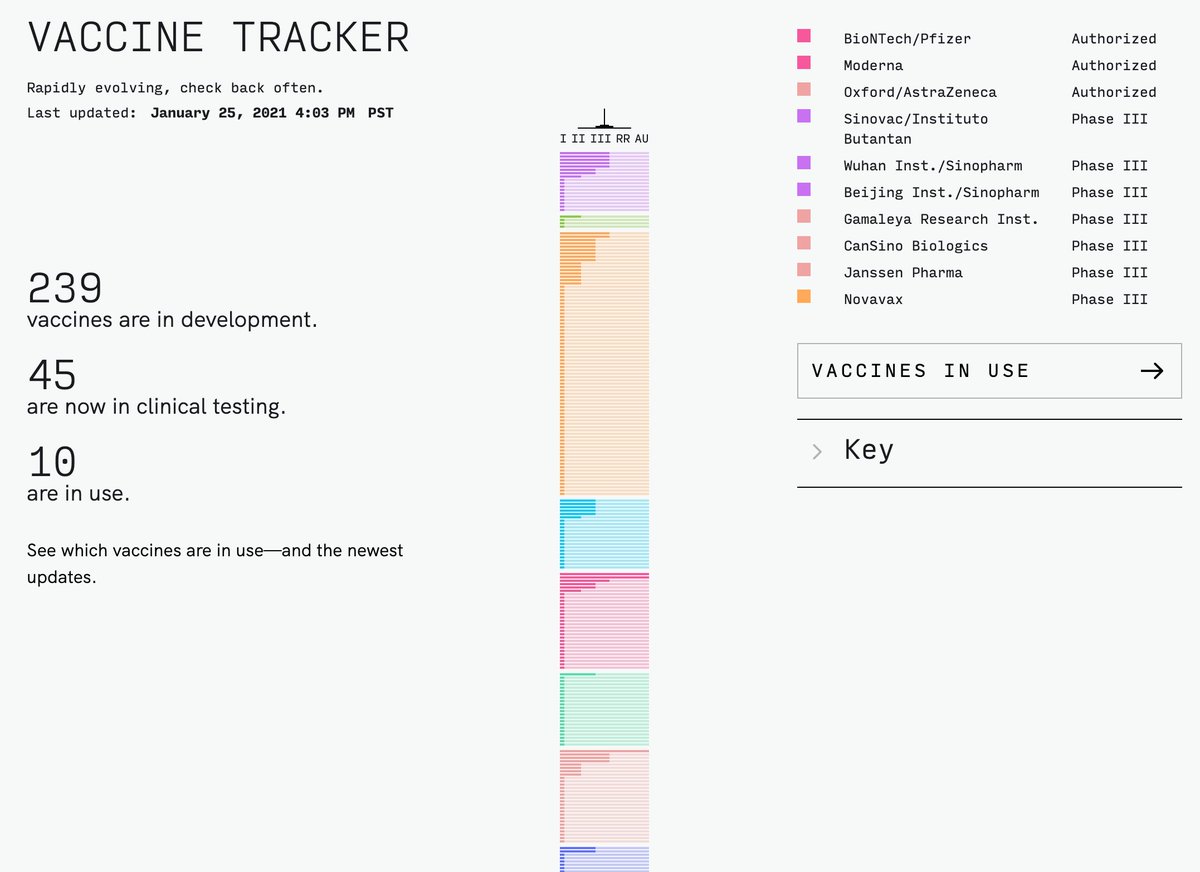
3/ If a vaccine that we pay for now won’t work in the end we have to throw the produced vaccines away.
But if a vaccine does work we are in a much better position then:
We will have a working vaccine with millions of doses ready to protect people.
But if a vaccine does work we are in a much better position then:
We will have a working vaccine with millions of doses ready to protect people.
4/ Even if we might end up having to throw away some vaccines it would likely still be worth pursuing this strategy – just because the costs of the pandemic are so high.
Even just in economic terms: vaccine production costs billions, the pandemic costs many trillions.
Even just in economic terms: vaccine production costs billions, the pandemic costs many trillions.
5/ Think about how fantastic it would have been if governments had taken the risk to produce as many mRNA vaccines as possible.
Let’s think carefully which unapproved vaccines we should produce now so that we don’t end up making the same mistake twice.
Let’s think carefully which unapproved vaccines we should produce now so that we don’t end up making the same mistake twice.
6/ If there is a change to strongly increase the production of the already approved vaccines then we should of course also do that.
For the mRNA vaccines this doesn’t seem to be the case blog.jonasneubert.com/2021/01/10/exp…
And to get it to 7.8 billion people it would make sense to do both.
For the mRNA vaccines this doesn’t seem to be the case blog.jonasneubert.com/2021/01/10/exp…
And to get it to 7.8 billion people it would make sense to do both.
7/ The idea has been there all along – and several countries have followed this idea in the last year.
But governments were not embracing it strongly enough to supply as many vaccines as we’d need to fight a global pandemic, they were too risk averse.
https://twitter.com/MaxCRoser/status/1257428715371454464
But governments were not embracing it strongly enough to supply as many vaccines as we’d need to fight a global pandemic, they were too risk averse.
8/ A lot of people were seeing this clearly and we have to thank them for setting up institutions like COVAX.
So when I said 'It was a huge mistake to not do this.’ in the first tweet I should have said 'It was a huge mistake to not do this much more.'
https://twitter.com/maxcroser/status/1345799544840343555
So when I said 'It was a huge mistake to not do this.’ in the first tweet I should have said 'It was a huge mistake to not do this much more.'
• • •
Missing some Tweet in this thread? You can try to
force a refresh

